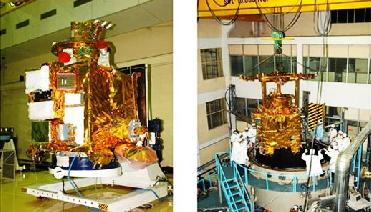
Scientists take radiometric measurements in front of Parthenon, on the Acropolis, Athens. -- Image credit: ESA
ATHENS (BNS): With an objective to develop urban heat wave forecasting techniques and appropriate alert systems to save modern-day cities from turning ‘ urban heat islands’, the European Space Agency has conducted a unique experiment in the capital city of Greece to collect data, combined with measurements from aircraft and satellites.
The data promises to improve ‘urban heat island’ forecasts to make life in present-day Athens easier during heat waves.
Heat waves strike with relative frequency in summer months across southern Europe but the Greek capital is notorious for its sweltering conditions. The city is particularly prone to high temperatures because of its dense layout, narrow streets, limited green space and long-standing air pollution problem. Air pollution, traffic, lack of open space and low evaporation also contribute to the heat of the city.
This phenomenon, called an urban heat island, makes the city’s temperatures soar up to 10ºC more than the surrounding countryside.
To improve the understanding of the complexities of how urban heat islands arise, so that more efficient alert systems can be developed and effective mitigation strategies adopted, the ESA organised an airborne campaign in July carried out over Athens.
In a series of coordinated activities, a group of thermal remote-sensing and urban-climate experts from Greece and Spain conducted ground-based measurements at various sites in and around the city, while aircraft equipped with sensitive instrumentation passed overhead and satellites orbiting Earth acquired data simultaneously from space.
The campaign, called Thermopolis 2009, was led and coordinated by Prof. Spyridon Rapsomanikis from the Democritus University of Thrace.
“Although the objectives of the Thermopolis 2009 project targeted the needs of ESA's Urban Heat Island and Urban Thermography Data User Element project, the generated dataset will, as an unavoidable by-product, generate unique scientific insight into the thermal budget of cities.” Prof. Rapsomanikis pointed out.
The campaign began on 18 July, when two aircraft flew simultaneously over the city. One aircraft took measurements with a hyperspectral imaging spectrometer called Airborne Hyperspectral System. The second aircraft carried an air turbulence temperature pressure and relative humidity system.
Data were also acquired from space by several satellites, including ESA's E
 Previous Article
Previous Article Next Article
Next Article











The Indian Air Force, in its flight trials evaluation report submitted before the Defence Ministry l..
view articleAn insight into the Medium Multi-Role Combat Aircraft competition...
view articleSky enthusiasts can now spot the International Space Station (ISS) commanded by Indian-American astr..
view article